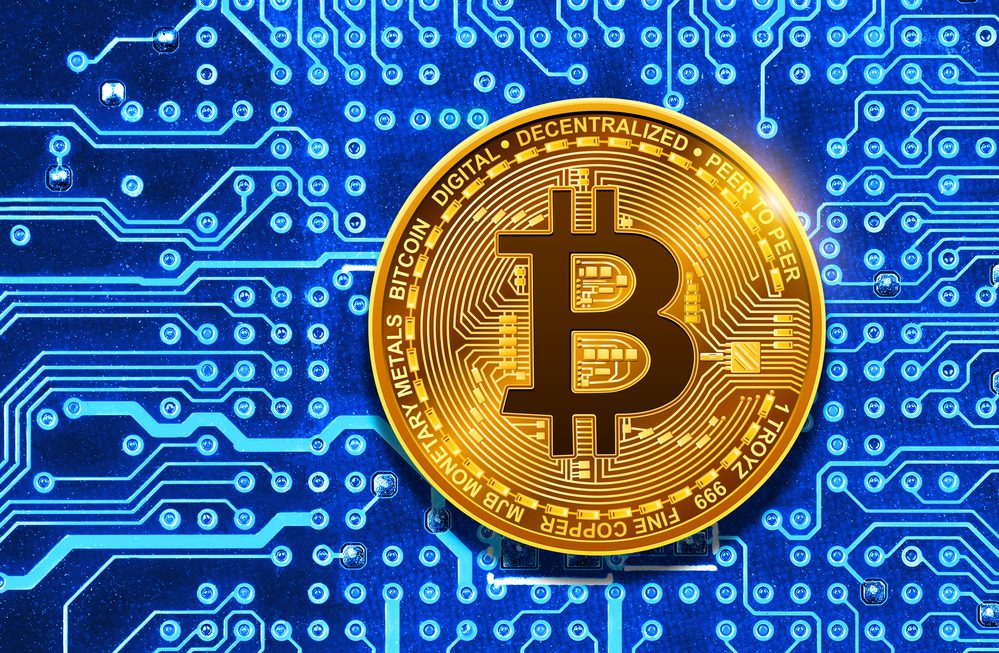Subscribe
"Unlock exclusive insights and elevate your financial wisdom with NetWorth.com — subscribe now to stay ahead in the wealth game!"

Bitcoin is a digital currency that was created in 2009. It is based on blockchain technology, a distributed ledger system that allows for secure and transparent transactions.
The maximum supply of this token is famously equal to 21 million, and as of August 2022, 19.1 million had been mined.
In this article, we will explore what will happen when Bitcoin reaches its maximum supply and how it could impact the price of Bitcoin and other cryptocurrencies.
Bitcoin does probably not need any introduction for our readers. After all, it is the most popular cryptocurrency with an enormous market capitalization.
Nevertheless, we would like to take a step back and explain what Bitcoin is and how it works before we answer the question posed in the title of this article.
Bitcoin is a decentralized cryptocurrency created in 2009 by an unknown person or group under the pseudonym Satoshi Nakamoto. It is based on a peer-to-peer network, and transactions occur between users directly, without an intermediary.
These transactions are then verified by network nodes through cryptography and recorded in a dispersed public ledger called a blockchain.
Bitcoin works thanks to a technology called the blockchain. The blockchain is a decentralized database that contains all the information about Bitcoin transactions. This means there is no central point of control or authority over the Bitcoin network.
All users in the network can see all the transactions that have ever occurred. This transparency is one of the main characteristics of Bitcoin and one of the things that makes it so unique.
So-called digital miners maintain the blockchain. These people (or organizations) use powerful computers to verify transactions and add them to the blockchain. In return for their work, they receive newly minted Bitcoins as a reward.
This is how new Bitcoins are created. So far, around 19.1 million Bitcoins have been mined. The total supply of Bitcoin is limited to 21 million coins, and it is estimated that the last Bitcoin will be mined in 2140.
While the year 2140 is far away, it’s not impossible that Bitcoin could reach its maximum supply before then. So what happens when it does?
When Bitcoin reaches its maximum supply, there will be 21 million Bitcoins in circulation. At this point, no new Bitcoins will be created, and the only way to obtain them will be through mining or buying them on an exchange.
Some people worry that this could cause a deflationary spiral, where the value of Bitcoin skyrockets as people hoard. Still, others believe it could lead to a more stable cryptocurrency market.
When Bitcoin reaches its maximum supply, this will impact the price of Bitcoin and other cryptocurrencies. The price of Bitcoin and other cryptocurrencies will likely increase as demand for these digital assets continues to grow.
While the price of Bitcoin and other cryptocurrencies may fluctuate in the short term, it is expected that the long-term trend will be positive as more people and businesses adopt these technologies.
When Bitcoin reaches its maximum supply, there will no longer be an incentive for miners to continue verifying transactions on the network.
As a result, they will likely stop mining Bitcoin and look for other opportunities. This
could lead to a decrease in the hash rate of the Bitcoin network, which would make it more vulnerable to 51% attacks.
Bitcoin’s market capitalization has grown significantly over the years, making it the most prominent digital token in the world. But could other cryptocurrencies overtake Bitcoin as the leading digital token?
Ethereum, for example, has also experienced an impressive increase in value over a relatively short period. Ripple and Litecoin also have substantial market caps. It’s possible that one of these other cryptocurrencies could overtake Bitcoin as the leading digital token.
However, it’s also worth noting that Bitcoin has a significant lead over the other cryptocurrencies in market capitalization, and it’s unlikely that this lead will be overtaken shortly.
Some observers argue that Ethereum’s upgrade to ETH 2.0 will heavily change the market.
Ethereum 2.0 is a system-wide upgrade that aims to improve the network’s scalability, security, and sustainability. The upgrade is designed to make Ethereum more attractive to users and developers, and it’s possible that it could lead to Ethereum overtaking Bitcoin as the leading digital token.
However, it’s worth noting that the upgrade is still in its early stages, and it’s unclear how much of an impact it will have on the market.
In any case, it’s clear that Bitcoin remains the dominant digital token and is unlikely to be overtaken by another cryptocurrency soon.
Since Bitcoin is the first and most popular application of blockchain technology, it’s hard to say what would happen if it disappeared. However, the technology behind Bitcoin, blockchain, has many other potential applications that could still thrive even without Bitcoin.
For example, blockchains could be used to securely track and store medical records or prove the goods’ origin in a supply chain. So while Bitcoin may not be around forever, blockchain technology will likely stick around and find other uses.
Bitcoin reaching its maximum supply is an inevitable event that will significantly impact the price of BTC and other cryptocurrencies.
Other cryptocurrencies could overtake Bitcoin as the leading digital token, but it’s unlikely that Bitcoin will lose its lead anytime soon.
Blockchain technology could survive even if Bitcoin ceases to exist. So while Bitcoin may not be around forever, its technology will likely stick around and find other uses.
An event estimated to happen in 2140 may seem irrelevant today, but when it comes, it could significantly impact the cryptocurrency market.
Besides, it is essential to note that this is a mere estimation, and the actual date could be sooner or later. Until then, we can only speculate about what will happen when Bitcoin reaches its maximum supply.